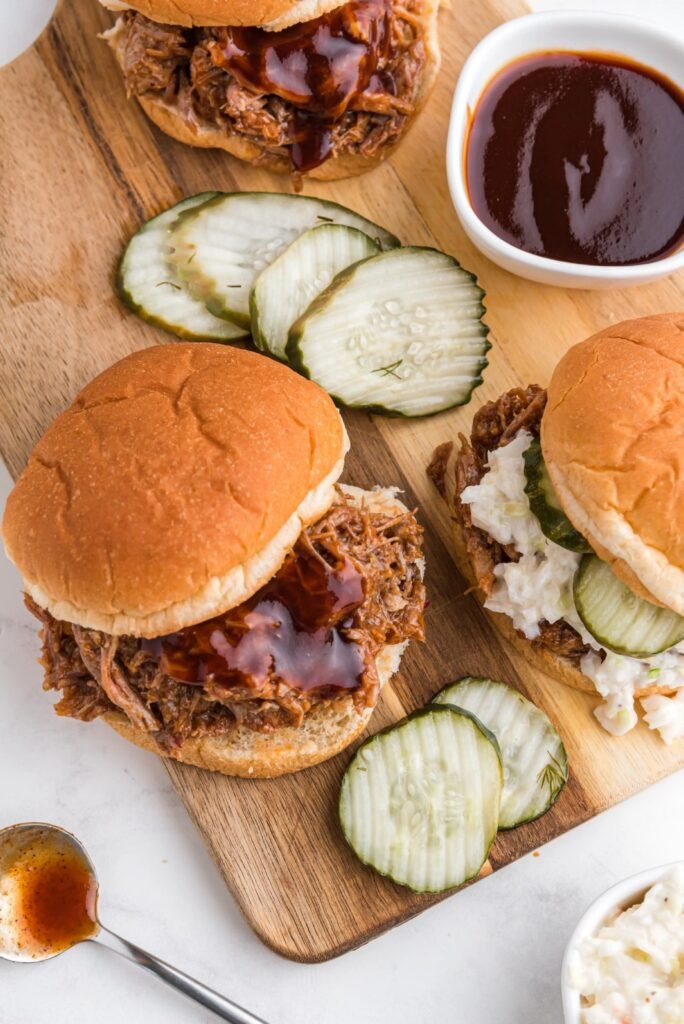The Fast-Food Frenzy: How America’s Love Affair with Quick Bites is Shaping the Nation
When I think of fast food, I can’t help but picture a classic road trip: the hum of the highway, the blur of neon signs, and the unmistakable aroma of fries wafting through the air. Fast food isn’t just a meal—it’s a cultural phenomenon, a guilty pleasure, and for many of us, a lifeline on busy days. But have you ever stopped to wonder just how many fast-food joints are out there? Spoiler alert: it’s a lot.
According to recent data, the fast-food industry in the United States is booming, with thousands of restaurants serving up everything from burgers to burritos. Let’s dive into this greasy, glorious world and explore what’s driving this fast-food frenzy.
Fast Food by the Numbers: A Nation Built on Burgers and Fries
First things first, let’s talk numbers. The fast-food industry in the U.S. is massive, and I mean massive. As of the latest data, there are over 198,000 fast-food restaurants scattered across the country. To put that into perspective, that’s roughly one fast-food joint for every 1,700 people. Whether you’re in a bustling city or a sleepy small town, it’s likely that you’re never more than a few miles away from a drive-thru.
But it’s not just about the sheer volume of restaurants.
The industry employs millions of people and generates billions in revenue each year. Fast food isn’t just a convenience—it’s a cornerstone of the American economy. And let’s be real, it’s also a cornerstone of our diets (for better or worse).
Why Are We So Obsessed with Fast Food?

Let’s face it: fast food has a special place in our hearts (and our stomachs). But what’s driving this obsession? Here are a few reasons why we can’t seem to quit our fast-food habits:
- Convenience is King
In a world where time is money, fast food is the ultimate time-saver. Need a meal in under five minutes? Fast food has you covered. Whether you’re rushing to work, shuttling kids to soccer practice, or just too tired to cook, fast food is always there, ready to serve. - Comfort in Every Bite
There’s something oddly comforting about a greasy burger or a box of crispy chicken nuggets. Fast food taps into our cravings for salty, sweet, and savory flavors, hitting all the right notes in every bite. - Affordability
Let’s be honest: eating out can get expensive. But fast food? It’s the budget-friendly option that doesn’t break the bank. For a few bucks, you can get a full meal—no reservations required. - Nostalgia Factor
Fast food isn’t just food; it’s memories. Think about it: birthday parties at McDonald’s, late-night Taco Bell runs in college, or sharing fries with friends after school. Fast food is woven into the fabric of our lives.
| Read: McDonald’s vs. Taco Bell: What’s the Difference? |
The Fast-Food Landscape: Who’s Winning the Race?
With so many options out there, it’s no surprise that the fast-food industry is fiercely competitive. But who’s leading the pack? Let’s break it down:
| Brand | Market Share | Signature Item | Why We Love It |
| McDonald’s | 21% | Big Mac | Iconic, consistent, and everywhere. |
| Starbucks | 15% | Pumpkin Spice Latte | Coffee + snacks = perfection. |
| Subway | 10% | Footlong Sub | “Eat fresh” (and customize endlessly). |
| Taco Bell | 8% | Crunchwrap Supreme | Bold flavors, late-night cravings. |
| Chick-fil-A | 7% | Chicken Sandwich | Polite service and addictive sauces. |
While McDonald’s still reigns supreme, newer players like Chick-fil-A are gaining ground fast (pun intended). And let’s not forget the rise of fast-casual chains like Chipotle, which are blurring the lines between fast food and sit-down dining.
| Check out: Taco Bell vs Chipotle: Which is Better? (Updated) |
The Dark Side of the Fast-Food Boom
As much as I love a good cheeseburger, I can’t ignore the elephant in the room: the health implications of our fast-food obsession. With obesity rates on the rise and chronic health conditions linked to poor diets, it’s clear that our love affair with fast food comes at a cost. But here’s the thing—it’s not all doom and gloom.
Many fast-food chains are stepping up their game, offering healthier options like salads, grilled chicken, and plant-based alternatives. It’s a step in the right direction, but there’s still a long way to go.
Global Influence of American Fast Food
American fast food chains have gone global, planting their golden arches and drive-thru menus in nearly every corner of the world. Brands like McDonald’s, KFC, and Burger King have found enthusiastic markets abroad, reshaping how people eat far beyond U.S. borders.
To succeed internationally, many franchises tweak their menus to suit regional palates. For example:
| Country | Adapted Item | Original Inspiration |
| Japan | Teriyaki Burger | Classic Cheeseburger |
| India | Paneer Zinger | Fried Chicken Sandwich |
| Philippines | Spaghetti with sweet-style sauce | Italian-American Spaghetti |
These adaptations reflect more than just taste—they show a careful cultural negotiation between global branding and local identity.
The globalization of fast food has made meals more uniform but also raised concerns. From rising obesity rates to the fading of traditional cuisines, America’s quick-bite influence is reshaping not just menus but lifestyles.
| Related: Fast Food Statistics For 2023 | US & Worldwide Data |
What Does the Future Hold for Fast Food?
So, where do we go from here? The fast-food industry is constantly evolving, and I’m excited to see what’s next. Here are a few trends to watch:
- Tech Takeover
From mobile ordering to self-service kiosks, technology is changing the way we experience fast food. Soon, your burger might be delivered by a robot (yes, really). - Sustainability Efforts
As consumers become more eco-conscious, fast-food chains are exploring ways to reduce waste and source ingredients responsibly. Think compostable packaging and plant-based menu items. - Global Flavors
Fast food is no longer just about burgers and fries. Expect to see more international flavors, like Korean BBQ tacos and Indian-inspired wraps, making their way onto menus.
Why You Should Care About the Fast-Food Industry
You might be wondering, “Why does this even matter?” Well, whether you’re a fast-food fanatic or a health-conscious eater, the industry impacts us all. It shapes our food choices, influences our economy, and even affects our environment. By understanding the trends and challenges facing the fast-food world, we can make more informed decisions—about what we eat, where we spend our money, and how we advocate for change.
Final Thoughts: A Love-Hate Relationship
At the end of the day, fast food is a double-edged sword. It’s convenient, delicious, and deeply ingrained in our culture—but it also comes with its fair share of challenges. As I sit here munching on a fry (no judgment, please), I can’t help but marvel at how this industry has shaped our lives. Love it or hate it, fast food is here to stay. And who knows? Maybe the next big thing in fast food is just around the corner, waiting to surprise us all.
So, what’s your go-to fast-food order? Let me know in the comments—I’m always looking for new recommendations!

Kathy is a restaurateur, artist, and blogger. After spending more than 10 years in the restaurant industry, she has decided to go digital and share her expertise and experience online.







